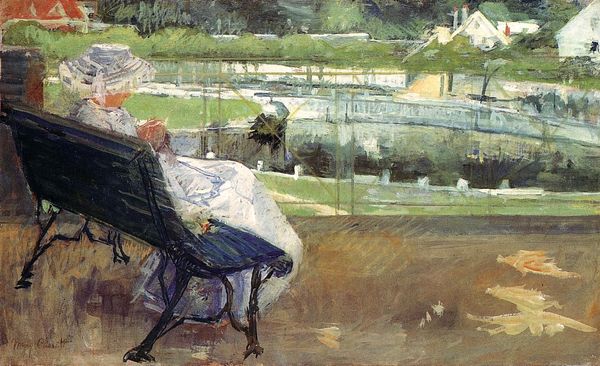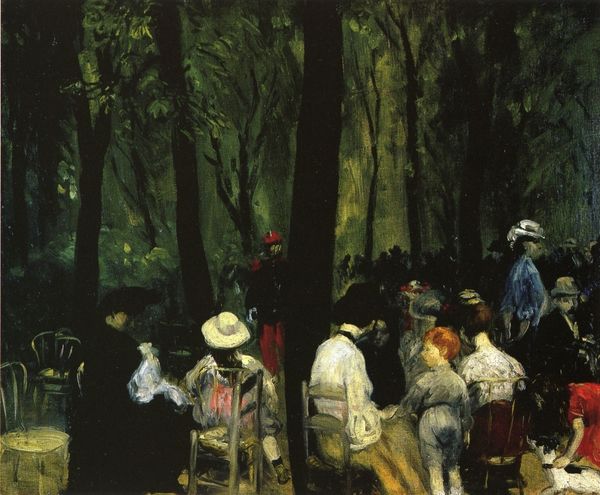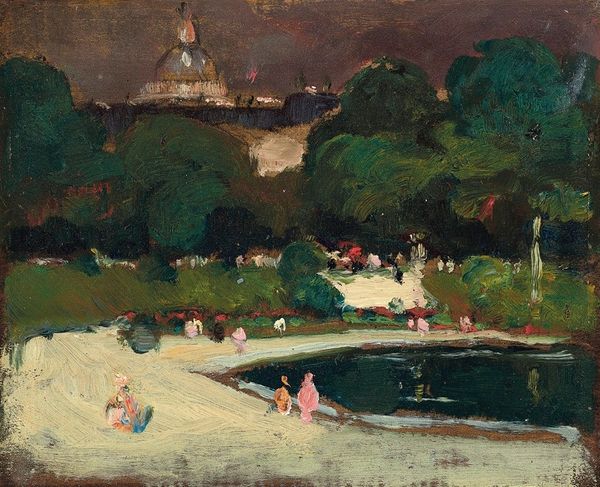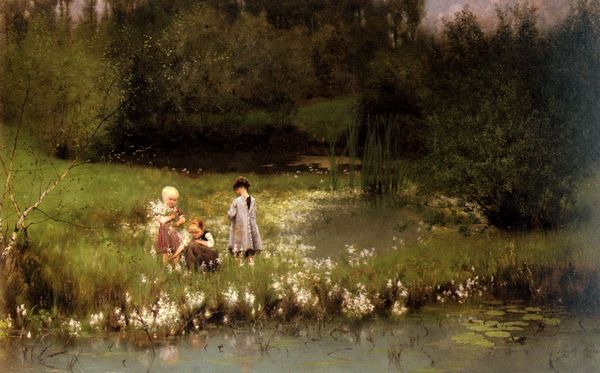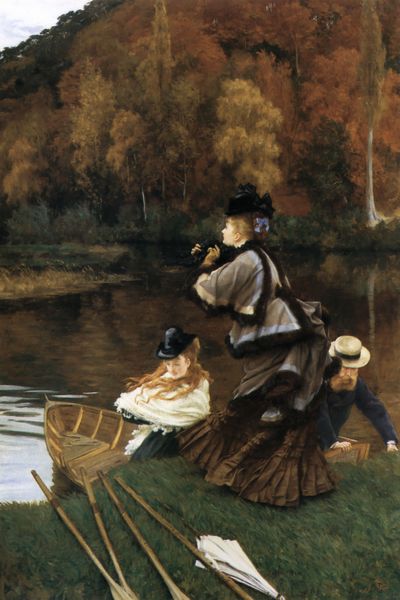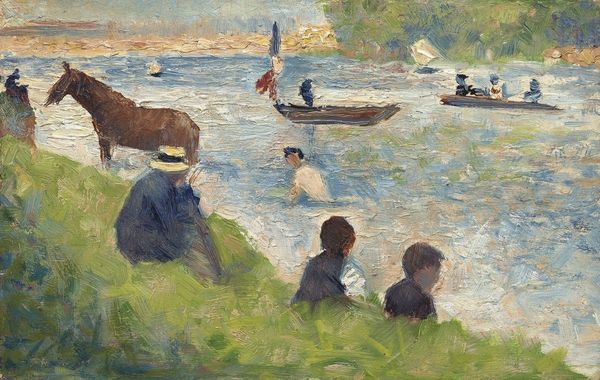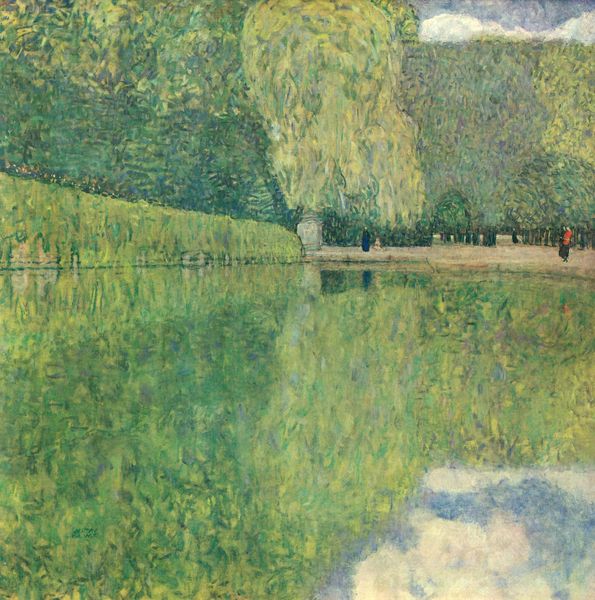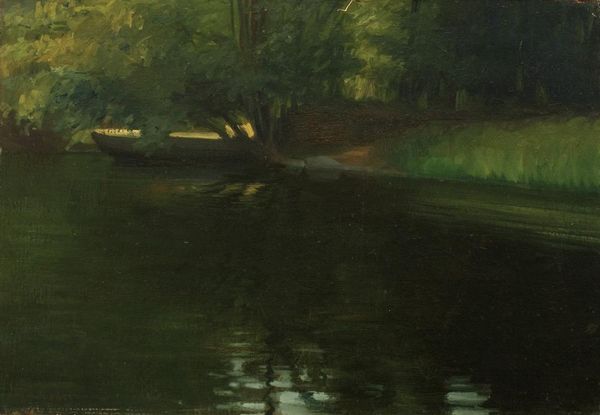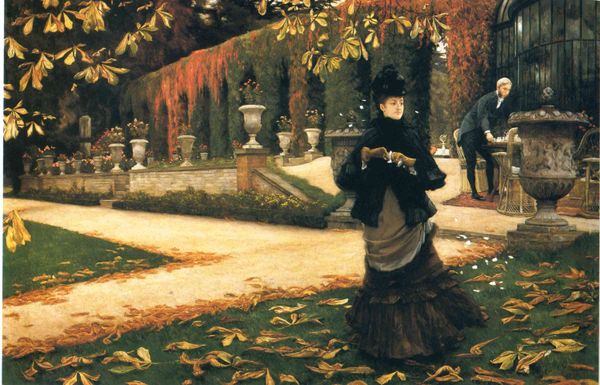
Copyright: Public domain
Editor: Here we have Boris Kustodiev’s "In the Bois de Boulogne" from 1909, rendered in oil paint, seemingly *en plein air*. It strikes me as a fleeting snapshot, capturing a moment of leisure. How do you interpret this work, focusing on its form and structure? Curator: Let’s begin with the artist's arrangement of color. Notice the dominance of verdant hues; they create depth. The composition guides our eyes. The darker greens up top establish a kind of visual weight, pushing the lighter, brighter water and figures into the foreground, emphasizing the interaction between the people and the swans. What effect do you think this contrast achieves? Editor: The high horizon makes the pond feel compressed. Also, the painting emphasizes the verticality of trees with short brushstrokes that accentuate the people at the pond's edge. Curator: Indeed. The rapid, broken brushstrokes, hallmarks of Impressionism, are key here. Observe how the artist employs these strokes, not merely to depict objects, but to render the ephemeral qualities of light and atmosphere. Does this focus on fleeting moments and optical effects detract from a deeper meaning, or does it, in itself, become the meaning? Editor: I see your point. The painting doesn’t seek to convey a grand narrative; rather, it revels in the sensory experience of being there. This almost pure visuality can be enough. Curator: Precisely. Through an emphasis on purely optical sensations and the materiality of paint, the artist delivers something profound and undeniably aesthetically powerful. Editor: I hadn't considered the formal elements creating meaning by themselves, beyond just depicting something recognizable. Thanks! Curator: And I am glad to discuss Kustodiev's treatment of pictorial space and its contribution to the viewing experience with you.
Comments
No comments
Be the first to comment and join the conversation on the ultimate creative platform.
